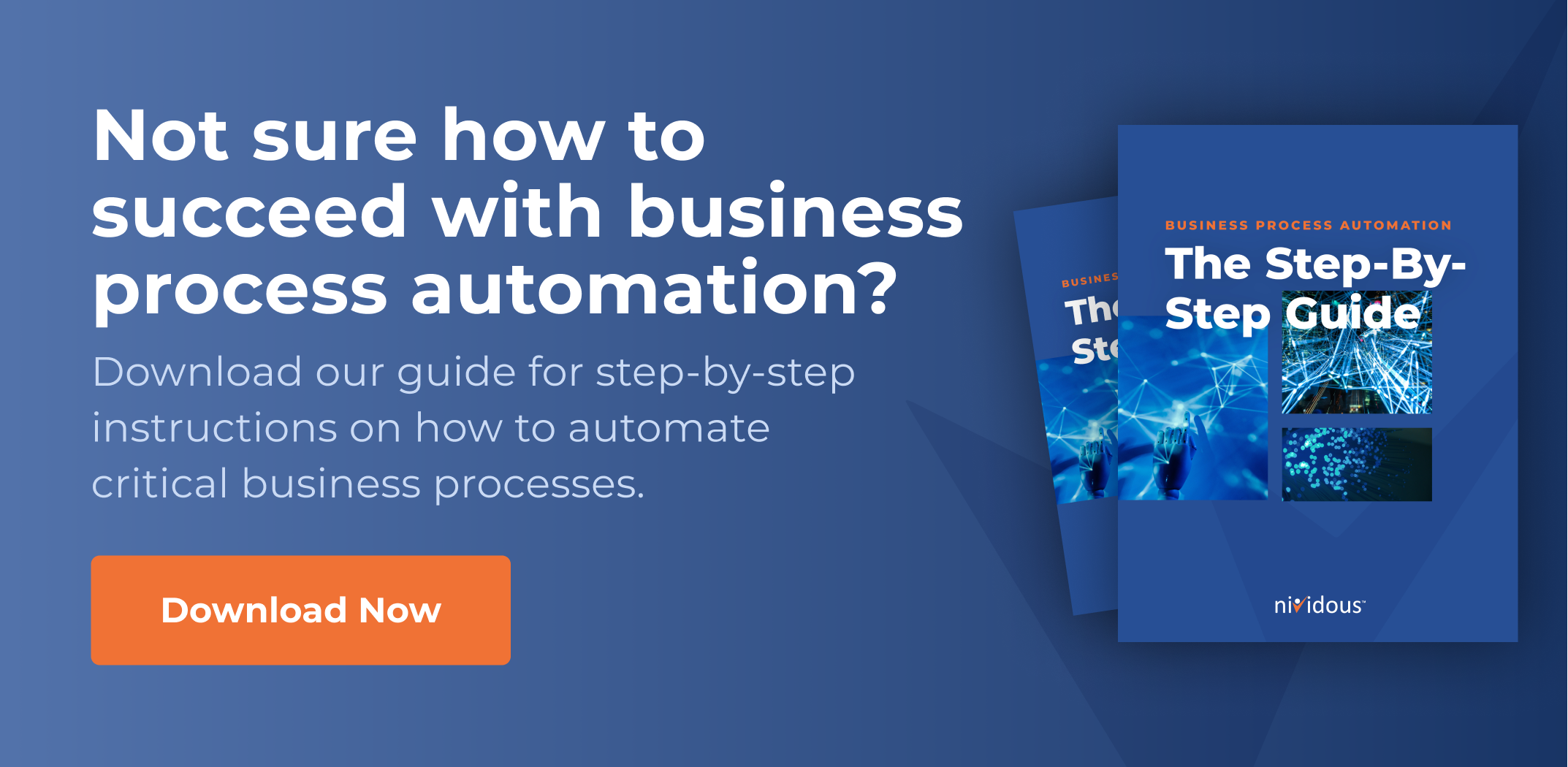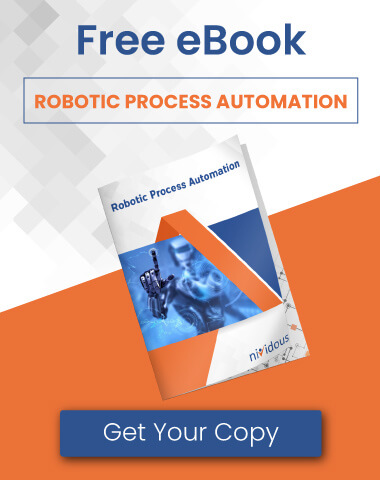According to the Association for Supply Chain Management (ASCM), the #1 industry trend for 2022 is the accelerated adoption of analytics and automation.
This isn’t surprising given the fact that technology like robotic process automation (RPA) has already proven that it can save organizations significant time, money, and resources when applied to supply chain operations. Read on to learn about the key benefits of RPA and dig into several important potential applications for automation in supply chain and logistics.
Why streamline your supply chain and logistics using RPA?
There are multiple advantages to automating supply chain and logistics using RPA, each of which addresses a significant pain point for leaders in the field.
Improve Data Accuracy (Pain Point: Bad Data)
The success of any supply chain relies heavily on quality data—data that’s clear, concise, and correct from start to finish.
This includes, for example:
- Order details (the quantity and type of items, the price, order date, and expected delivery)
- Delivery details (information about which order is en route, where it’s coming from, where it’s headed, and when it should arrive)
- Payment details (data about payment pending, in-progress, or completed)
Any process associated with these activities can be slowed or even derailed by inaccurate, incomplete, or unclear data. In the case of a delivery truck, using RPA to automate any piece of process would vastly mitigate the potential for human error.
Easily Process Customized Data (Pain Point: Data Incompatibility)
Further, the type of data required often varies widely between different companies and suppliers, which can make accessing, tracking, and transferring data in any standardized way difficult.
As an example, take the trucking company All Chemical Transport Corp.. All Chemical focuses on liquid bulk transportation and its process is extremely customized, from the type of tanker required and the criteria for Kosher-certified transport to the classes of chemicals that can permissibly travel together and documentation for safety protocols.
The data All Chemical needs to collect and share is very different from the data a grocery delivery truck, for example, would use. Electronic Data Exchange (or EDI), a supply chain and logistics technology that allows for standardized data exchange, didn’t work for All Chemical, in part because of the nuances of its field. RPA on the other hand, was able to capture and share custom information with complete accuracy.
See RPA automation for supply chain and logistics in action
What an on-demand webinar with All Chemical’s Anthony Coruccini to witness the power of RPA for ROI.
Improve Data Sharing (Pain Point: Communication Errors)
As potentially harmful as flawed data is to supply chain and logistics, flawed interpretations of it can be equally disruptive.
Say a call center worker is relaying information from a driver to a customer—the potential for someone to misspeak, mishear, or misunderstand is high. Processes that depend on human communication and data transfer are ripe for errors and mistakes—they’re also not the best use of workers’ time. RPA can greatly improve communication by ensuring stakeholders are consistently accessing the same data (and the data is correct).
Simplify Onboarding (Pain Point: Siloed Knowledge and Expertise)
In supply chain and logistics, data and knowledge can easily become siloed: Workers tend to specialize in one piece of the supply chain, and each piece may be managed using a different tool. Not to mention that, in many cases, complex processes are owned by a single individual and lack documentation. And even if the processes are documented, process understanding and interpretation can be a concern.
RPA begins with a thorough documentation of processes (providing transparency around steps that are less than efficient). And once an RPA bot is introduced into a process, it’s there for the long haul. New team members can get up to speed faster because they only need to learn what is required for the bot, not the manual processes or nuances of a particular system.
Using RPA To Maximize ROI: Model Interventions
Which functional areas benefit the most from RPA? Tasks that fall within the following four categories have excellent automation potential:
- Sales and Marketing: RPA bots can update CRMs, ERPS, sales dashboards and order statuses; they can also send and print invoices, and send lead notifications.
- Finance: Bots can read and sync invoices, work through pending AR (accounts receivable) reminders, reconcile books with bank statements, and tie proof of delivery to orders.
- Scheduling and Tracking: Using RPA, automations can perform data entry between partner portals and move updates between systems, fetch details of bills of lading and carrier invoices, monitor and send emails, and manage exception alerts and notifications.
- Customer Service: RPA bots can automate personalized broadcasts, manage Chatbots related to quality of service, and resolve calls without human intervention.
In nearly every area of a supply chain business—especially those where human workers manage and move data manually and repeatedly—RPA can make a big difference.
Let’s dig into three specific interventions All Chemical implemented using Nividous bots:
1. Order Processing
Before RPA, All Chemical’s manual sales order creation required a human worker to retrieve work orders from emails, log in to an external system, and key in relevant data to complete lengthy forms. The process had a high risk of error and made it difficult to track the status of multiple orders. In addition to completing the above listed process, an RPA bot is now also used to enter order data into a TMS system, consolidate files, and send a daily summary of orders.
Applying RPA to order processing resulted in a 90% reduction in manual efforts, an 80% improvement in process turnaround time, and a 90% increase in volume handling.
2. Collections
All Chemical utilizes RPA for collections, a process the team formerly completed manually by preparing a weekly report, exporting it to Excel, and sending it to the customer. Using a bot, All Chemical can run this process overnight (avoiding any drain on its technology at peak use) and the bot sends past due invoices to customers automatically. All Chemical has also implemented a bot to automatically send invoices to customers on request, outside of the weekly process.
3. Reporting
Before All Chemical employed automation, the General Manager would create a monthly report that combined financial statements from the company’s five entities and broke out the data by classes for each entity. All Chemical’s GM still reviews and closes the individual accounts before running the bot, but once he completes these tasks, the bot generates accurate reports in under four hours, which are then immediately forwarded to the accountant.
Where to Start With RPA For Supply Chain And Logistics
As you explore opportunities to streamline supply chain and logistics operations using RPA, consider starting small. While you may be tempted to implement RPA for your biggest or most complex problem, beginning with a simpler process yields better results.
Why? Because your biggest pain points usually involve numerous steps, systems, and/or stakeholders. Rather than starting here, it’s better to build up to tackling these major issues by starting with small projects that can be resolved faster. Identify the repetitive tasks that unnecessarily rely on human knowledge, intelligence, and time—and be on the lookout for processes where most variables remain the same (since changing variables add to complexity).
Starting with a small project also allows you to get comfortable with documenting processes and partnering with RPA developers. You can test the system more easily and work out any kinks. Although the impacts of this automation may feel less significant, you won’t run the risk of frustrating your team with a time-consuming, complex process right out the gate. There are also fantastic opportunities to enhance and combine RPA bots with other automation technology to streamline your entire supply chain end-to-end. Nividous can support you at every stage of the process—our team understands your industry challenges and is prepared to help you address them with intelligent automation. Learn more today.






